Axolotls, scientifically known as Ambystoma mexicanum, are captivating amphibians native to the remnants of Xochimilco, a system of lakes and canals near Mexico City. These creatures, often referred to as “Mexican walking fish,” are not fish at all but rather a type of salamander that remains aquatic throughout its life.
One intriguing aspect of axolotls that often piques curiosity is their ability to produce sounds. While not traditionally known for their vocal prowess, axolotls do indeed make noise, albeit subtly and often beyond the range of human hearing. These sounds, produced by the movement of air in their respiratory system, play a significant role in their behavior and communication.
In this article, we will explore the acoustic world of axolotls, delving into the science behind their sounds, the types of noises they make, and how these sounds contribute to their unique behavior and well-being. Drawing on scientific research and expert insights, we aim to provide a comprehensive understanding of axolotl acoustics.
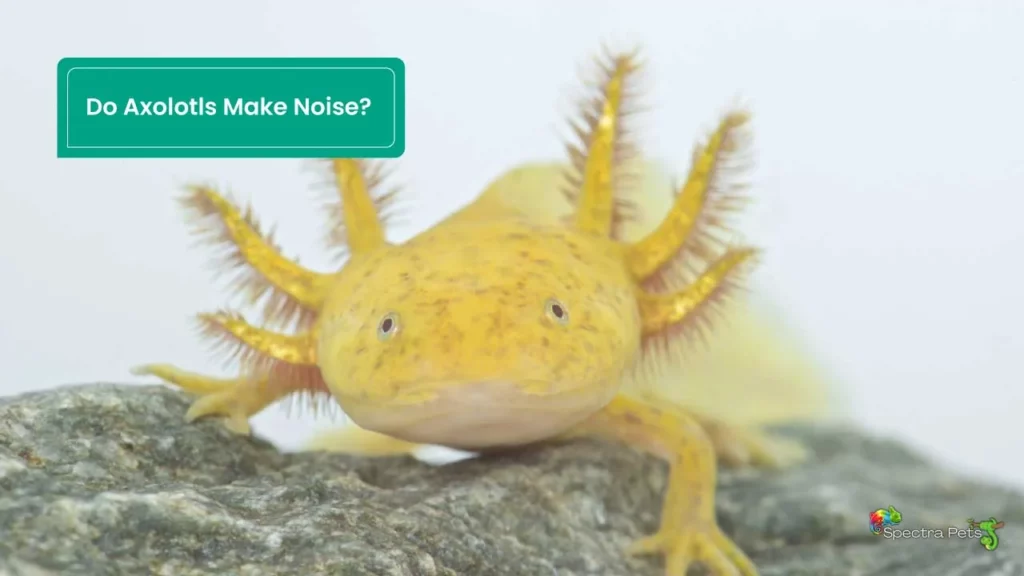
Understanding Axolotl Sounds
Axolotls are capable of producing a variety of sounds, including squeaks, hiccups, and barks. These sounds are made without the aid of vocal cords, a feature that sets axolotls apart from many other animals. The frequency and volume of these sounds can vary, adding another layer of complexity to the acoustic world of axolotls.
The biological basis of axolotl sounds is a topic of ongoing research. It’s believed that these sounds are produced as a result of their respiration process. Axolotls, like other amphibians, undergo a process known as buccal respiration, where they force air into their lungs by creating a positive pressure in their buccal cavity. This process might contribute to the production of the sounds we associate with axolotls.
The frequencies involved in axolotl vocalization are yet another fascinating aspect of their acoustic behavior. While the exact frequencies are still being studied, it’s clear that axolotls are capable of producing sounds across a range of frequencies, adding to the diversity of their vocalizations.
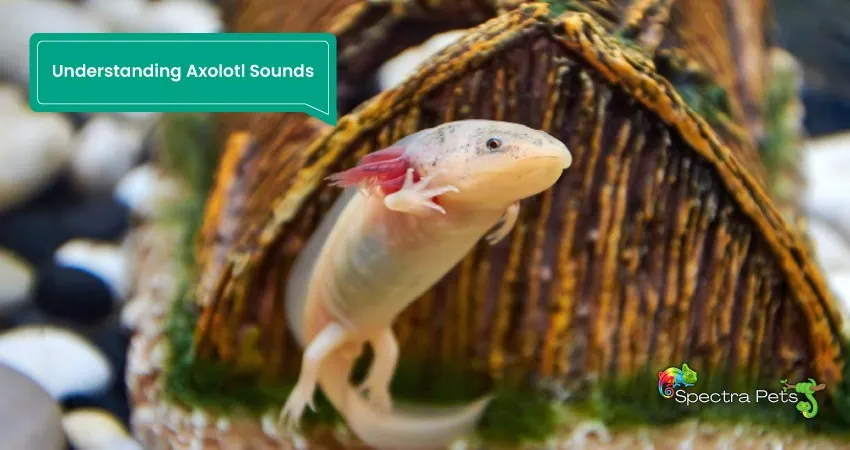
Patterns in Axolotl Sounds
Axolotls do not vocalize constantly. Instead, their vocalizations follow certain patterns, which can be influenced by various factors.
Certain conditions seem to trigger axolotl vocalizations more than others. For instance, axolotls may produce more sounds during feeding or when they are excited. Understanding these triggers can help in interpreting axolotl sounds and in providing optimal care for these creatures.
Preliminary observations suggest that axolotls may exhibit circadian rhythms in their noises, with certain sounds being more common at specific times of the day. However, more research is needed to confirm these observations and to understand the underlying mechanisms.
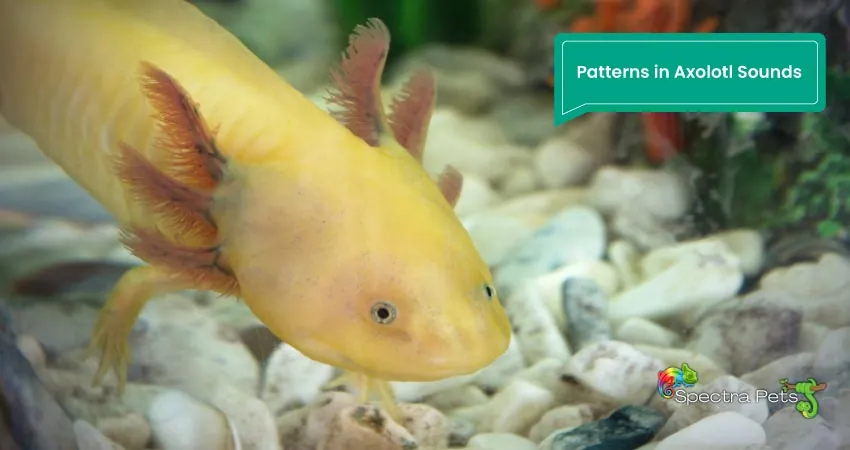
Different Noises Made by Axolotls
Axolotls are capable of producing a variety of sounds, each of which may serve a different purpose.
Recognizing different axolotl sounds can be a challenging task, given the diversity of their vocalizations. However, with careful observation and a keen ear, it’s possible to distinguish between different types of axolotl sounds.
While all axolotls belong to the same species, Ambystoma mexicanum, there are different color morphs, each of which may produce slightly different sounds. Further research is needed to understand the implications of these species-specific sounds.
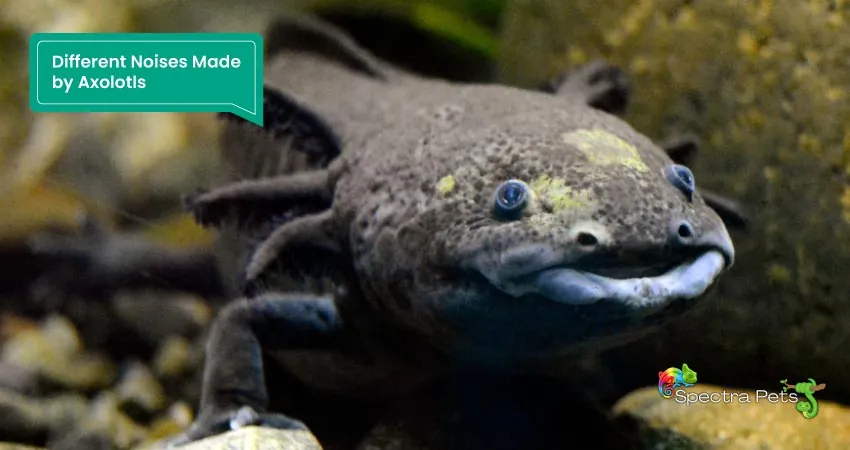
Audibility of Axolotl Sounds
Axolotl sounds are not always audible to the human ear. However, with the aid of technological tools, it’s possible to detect and analyze these sounds.
The human ear has certain limitations when it comes to perceiving axolotl sounds. For instance, some axolotl sounds may fall outside the range of frequencies that the human ear can detect. Moreover, the sounds produced by axolotls are often soft and can be easily drowned out by ambient noise.
Thanks to advancements in technology, we now have tools that can detect and analyze axolotl sounds. These tools can pick up sounds that are beyond the range of human hearing and can help in the detailed analysis of axolotl vocalizations.
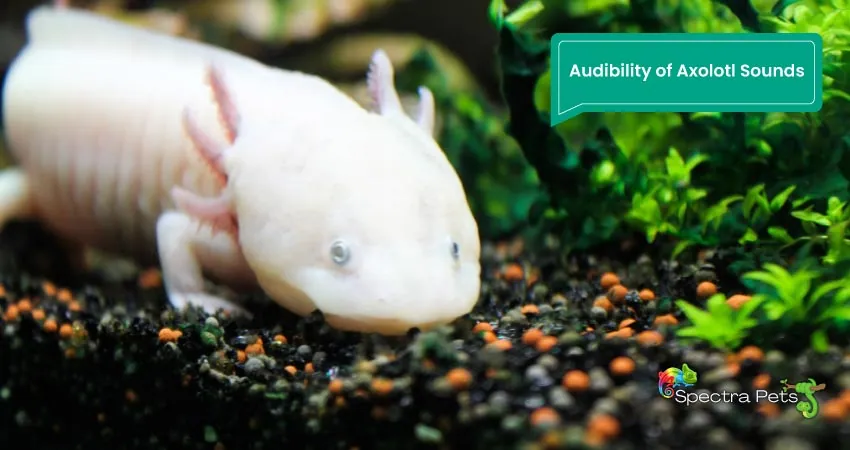
Axolotl Sounds and Communication
Axolotl sounds play a crucial role in their communication. By understanding these sounds, we can gain insights into axolotl behavior and social interactions.
Axolotl noises are not just random sounds; they serve important communication purposes. For instance, certain sounds may signal distress, while others may indicate excitement or contentment. By understanding these signals, we can better cater to the needs of axolotls.
Axolotls rely on both acoustic and non-acoustic forms of communication. For instance, in addition to producing sounds, axolotls also use body language to communicate. Understanding this interplay between different forms of communication can provide a more holistic view of axolotl behavior.
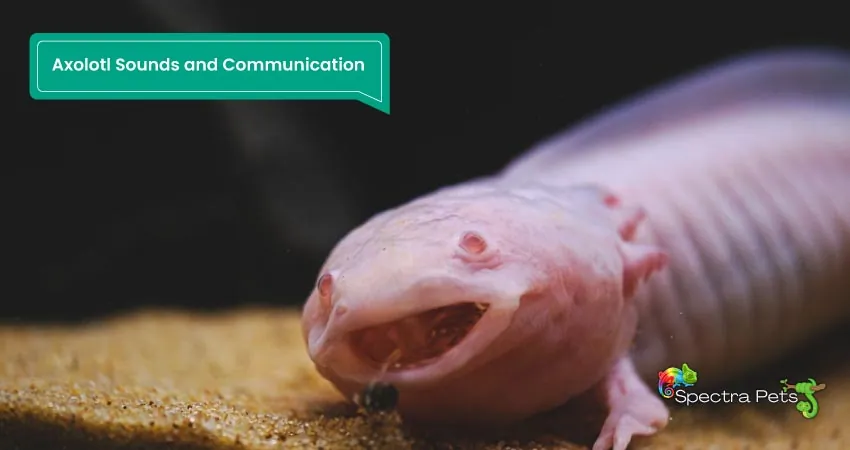
Impact of Noises on Axolotl Behavior and Well-being
Noises can have a significant impact on axolotl behavior and well-being. By managing noise levels and understanding how axolotls react to different sounds, we can ensure their health and happiness.
Loud noises can cause stress in axolotls and may lead to changes in their behavior. For instance, axolotls exposed to loud noises may become less active or may exhibit signs of distress.
Sound management is an important aspect of axolotl care. By controlling noise levels in the axolotl’s environment and by recognizing and addressing axolotl distress signals, we can ensure a healthy and stress-free environment for these fascinating creatures.
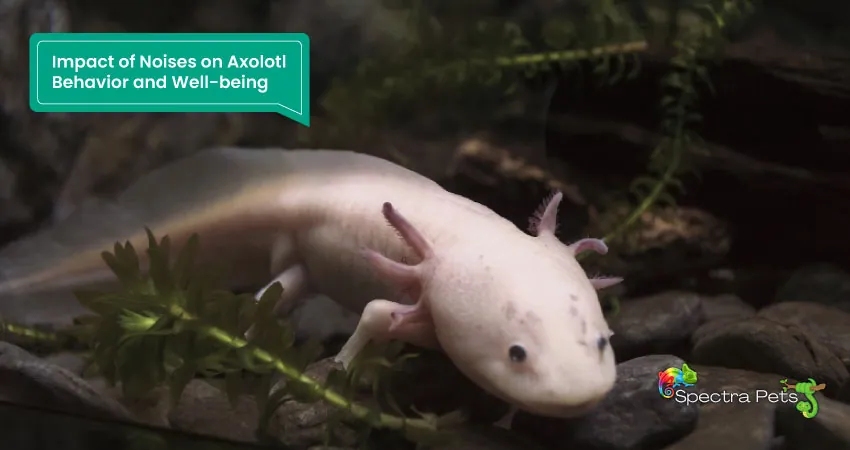
Conclusion
Axolotls are unique creatures with a fascinating acoustic world. While they may not be the most vocal of creatures, the sounds they make provide valuable insights into their behavior and well-being. As we continue to study and understand these sounds, we can better cater to the needs of axolotls and ensure their health and happiness. Future research on axolotl acoustic behavior promises to reveal even more about these remarkable creatures.
